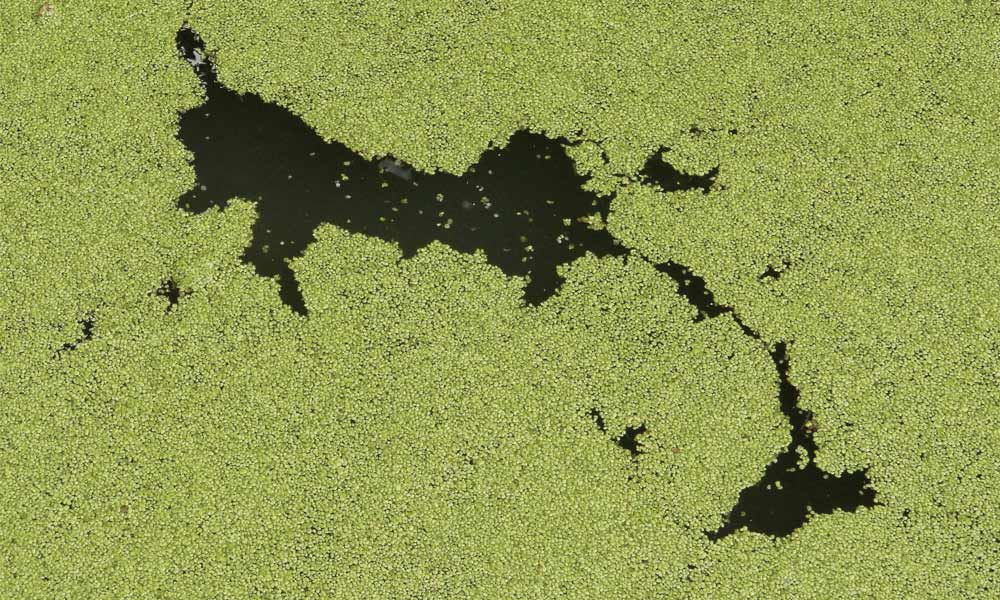6 Tips from Solitude Lake Management to Prevent Summer Fish Kills


SOLitude Lake Management
Hot summer temperatures can put a strain on aquatic environments and often push animals, such as fish, to their limits. As temperatures increase, so does the possibility of a fish kill. When a fish kill is discovered, it’s common for communities to fear the worst – from chemical spills to foul play. However, most fish kills are a natural occurrence that can happen as water warms and dissolved oxygen levels become depleted. While nature is often to blame, communities can take action to improve the summer conditions of their waterbodies.
“The risk of a fish kill can remain high over time unless proactive steps are taken by property owners to break the cycle,” said David Beasley, Director of Fisheries at SOLitude Lake Management, an industry leader in lake, pond and fisheries management. “It’s important for communities to understand the cause and introduce proactive management strategies before a fish kill occurs.”
SOLitude Lake Management recommends the following measures to homeowners, landowners, fisheries managers and municipalities with freshwater ecosystems to better predict and prevent summer fish kills:
Be observant
Fish respire through their gills and require oxygen to survive—and warm summer water retains less oxygen than colder water. If dissolved oxygen levels become too low, fish will often gather at inflow areas as well as near the surface of the water where oxygen is most saturated. Fish will also exhibit stressed behavior, and quickly startle in mass when you approach the waterbody. If these signs are recognized early on, it is possible to take steps that may prevent an imminent fish kill.
Introduce an aeration system
Without suitable circulation, the water column can become stratified by temperature and dissolved oxygen levels that cannot effectively sustain life. Floating fountains may help distribute oxygen in the upper water column of a lake or pond by spraying water across the surface of the waterbody. Submersed diffused aeration systems can help oxygenate the entire water column by pumping air through a series of weighted tubing and diffusers placed at the bottom of the pond.
Prevent nuisance algae and vegetation growth
When nuisance aquatic algae and plants like duckweed, watermeal and hydrilla are left unmanaged, they may form dense blooms or mats on the surface of a lake or pond, blocking sunlight, impeding water circulation and depriving native plants and fish of necessary oxygen. Nutrient management measures like beneficial buffers, biologicals and phosphorous-locking technology can help limit excessive nutrients in the waterbody that are known to promote undesirable algae and vegetative growth.
Regular water quality testing
Lake and pond owners often wait until after a fish kill occurs to conduct water quality tests, but a proactive water quality testing program can help identify water quality impairments, like dissolved oxygen, pH and nutrient levels, before they get out of hand and ensure the most effective management methods are being utilized to protect the waterbody.
Acknowledge the unpredictability of nature
No matter the steps that are taken to protect the fish in your waterbody, Mother Nature sometimes throws curveballs. Large thunderstorms and natural disasters can create lake and pond turnover, where water chemistry changes rapidly, suddenly trapping fish in stressful conditions. As a result, the waterbody may experience a fish kill that is very difficult to prevent.
Consider an Integrated Management Plan
While fish kills are typically a natural occurrence, knowledge and diligence can help prevent them from happening—or help your pond bounce back if one has occurred. If your waterbody is susceptible or has sustained a recent fish kill, consider consulting with a professional lake or pond manager to implement new preventive strategies. A professional can help you develop a unique long-term management plan and recommend the most suitable type of aeration, beneficial plants and vegetation, fish species and management methods to revitalize your waterbody once again.
Recent Posts
One of the Biggest Jobs in Golf
When Rory McIlroy finally slipped into the Green Jacket on Sunday, April 13, 2025, after…
Audubon International Marks Earth Day In Growth Mode
As the world celebrates Earth Day on April 22, Audubon International – the environmentally focused non-profit…
Help keep golf sustainable by bidding in GCSAA’s Rounds 4 Research online auction
In celebration of Earth Day, you can help fund the research that advances golf’s environmental…
Five Cabot Golf Courses Place in Golfweek’s Prestigious 2025 Top 100 International Courses List
Cabot, a developer and operator of luxury resort and residential golf destinations, is proud to…
Champion Hills Rebuilds with Heart: A Story of Resilience and Restoration
When Hurricane Helene swept through in late September 2024, Champion Hills Golf Club faced a…
Discover the New Graves Golf Club: A Game-Changing Facility in Edmond, OK
Graves Golf Club, the much-anticipated golf and training destination founded by celebrated instructors Tim and…


